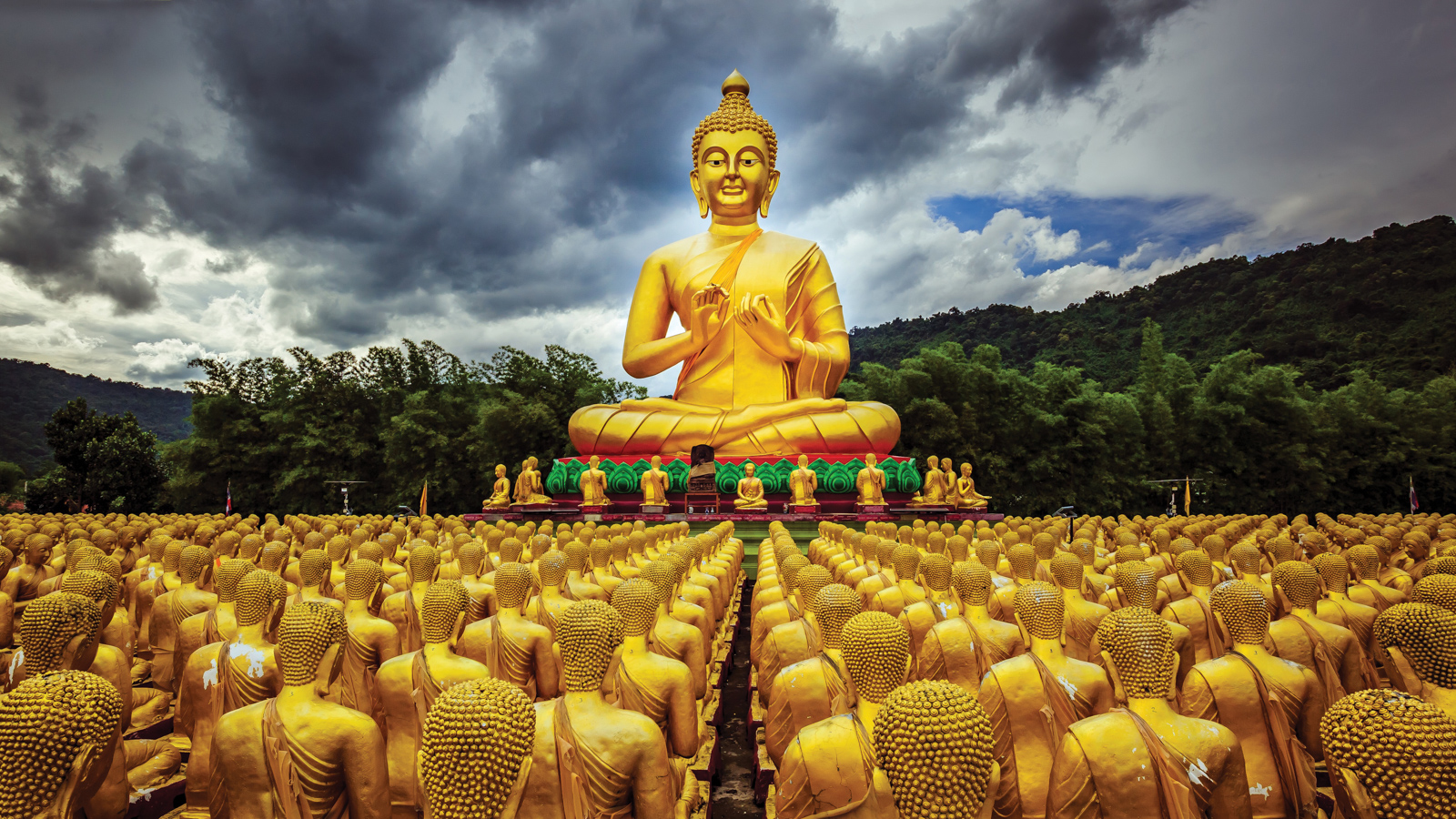
The word sangha means to “bring together” into a group and is the general word for “community” in both Pali and Sanskrit. It can refer to a flock of crows or a herd of deer, but in Buddhist literature it is primarily used to refer to the Buddhist community.
Most often sangha refers to the formal community of monks and nuns, and as such it is often capitalized in English usage. This is especially the case when it is listed as part of the “triple gem”: the Buddha, Dhamma, and Sangha (the Awakened One, his Teaching, and his Community).
Traditionally one joins the Sangha by a formal act of renouncing all possessions and worldly relationships, and then “goes forth” into the homeless life of a monk or nun. This is when one shaves the head, puts on the robes of a mendicant, and lives only on freely offered food. In the early days this was normally a lifetime commitment, but today ordination can be temporary. Sangha members in ancient India gathered together as a community twice a month, on the days of the full and new moon, at which point they would recite the memorized discourses together. They would also admit openly to any transgressions of the monastic rules (227 for the monks, 331 for the nuns).
The early Buddhist community was actually composed of four parts, with the addition of a community of lay followers (literally, those who hear the teachings) divided into male and female adherents. The Buddha is often depicted as teaching the “fourfold assembly,” surrounded by monks, nuns, and male and female lay followers. One would formally join the lay community by chanting “I go for refuge to the Buddha, Dhamma, and Sangha” three times.
More recently the word sangha has been extended even wider in the West to include almost anyone with an interest in Buddhist thought and practice. Local temples and retreat centers refer to their participants as sangha members, and people look to join meditation communities or affinity groups that self-identify as sanghas.
Finally, the word can be extended to encompass all sentient beings—and even all inhabitants of a unified ecosystem—as members of a single sangha. This inspiring vision brings with it a heightened sense of connection, a greater appreciation of mutual interdependence, and a shared responsibility for all beings to respect and care for one another.
The post What’s in a Word? Sangha appeared first on Tricycle: The Buddhist Review.
from Teachings – Tricycle: The Buddhist Review
https://tricycle.org/magazine/sangha-meaning/
from https://tricycle.org
#buddhist #buddhism
No comments:
Post a Comment